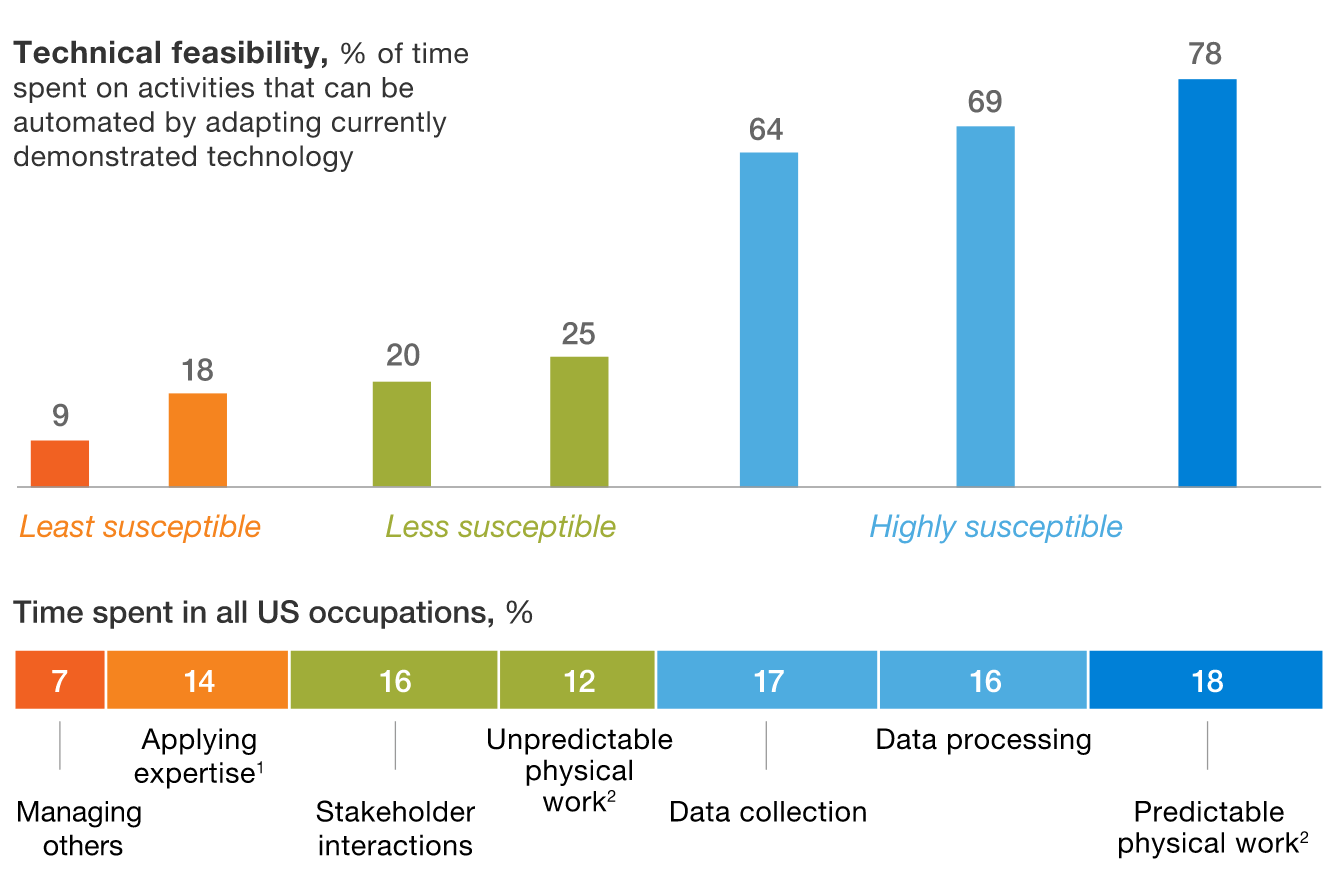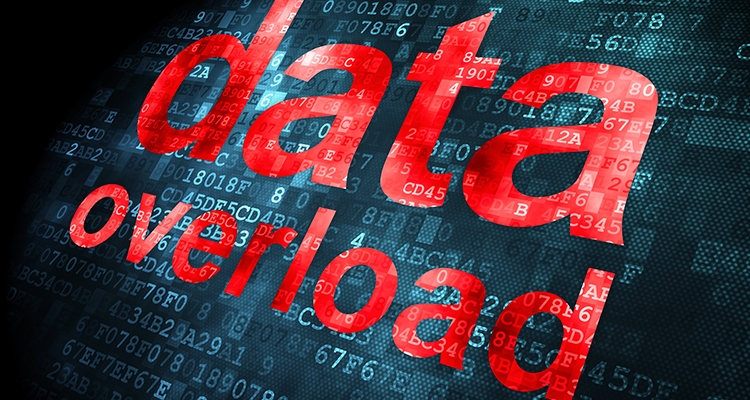
- Blog
- Apr 23, 2018
- By Jeff Keenan
We expect to see huge opportunities in marketing attribution in the near future. Start making the right preparations today, to be ahead of the pack next year.
Almost all industries and professions will see an increase in automation of tasks in the future. An intriguing report by McKinsey on “The Technical Potential For Automation” shows that “Data collection” and “Data processing” (in light blue) is highly susceptible to being automated in most industries. In the field of marketing attribution, we can assure you that data collection and processing is indeed highly automated.
Within a few minutes you can install an attribution tool to start collecting and processing website visitor data, from the top of the funnel to the bottom. It’s fairly easy to collect the information you need about how customers behave on your website, and how they react to a wide range marketing initiatives. But this gathering of information is only one part of the equation…
Growing into an integral part of business strategy
The second part is acting upon the information you’ve gathered. McKinsey’s report also shows how “Applying expertise” (in orange) to decision making and planning is a lot harder than collecting and processing data. The future of marketing attribution will focus on automating the second part of the equation, making the right decisions and enabling systems to make sensible business decisions autonomously, with as little human intervention as possible.
For automated systems to make the right business decisions, marketing attribution will have to become more aligned and integrated with business goals and strategy. As time moves on, we expect marketing attribution to go from a tool that is often used by specialists in the periphery of their organization, to becoming an integral part of business strategy. Marketing attribution and attribution vendors will help solve specific business problems.
Here are two examples of how attribution will move from a tool to observe customer behavior, to becoming a system that acts on specific business problems autonomously.
Automatic redistribution of ad spend
In 2019 we’ll move ever closer towards attribution systems that automate themselves. 94% of marketers said a tool that provides continuous, autonomous optimization across channels would be appealing to them. Well, that’s exactly what they’re gonna get.
At this moment, proper marketing attribution will yield marketers a set of ad performance numbers, segmented by channel, product, and device. Based on this information, they can conclude which ads yield the most favorable MROI, based on the cost of the ad and the total extra revenue attributed to the ad. Marketers can then decide which ads to spend more of their budget on, and which initiatives to phase out.
Today, action points that flow from the decisions made will have to be performed manually. Marketers need to log in to their Facebook ad and Google adwords accounts to make adjustments to the distribution of the available budget across ad platforms, devices and channels. It can be quite a hassle, and realistically, you won’t have the time to adjust ad spend more than once a week. That means your budget distribution will be less-than-ideal 6 days a week, every week, throughout the year.
In the near future, marketing attribution tools will keep an overview of the performance of all your ads across the various ad platforms you’re using. At the end of the day, all marketers are looking to maximize Marketing Return On Investment. Everybody is aiming to effectuate the biggest raise in revenue from every dollar spent on ads. Attribution tools will soon be able to automatically redistribute ad budget in very short time intervals, optimizing for the largest MROI possible.
Marketers can cross a weekly recurring task off their ToDo list forever. They’ll only have to read quick emails that report the actions the system has implemented automatically. Who wouldn’t want that?!
Tailored product offerings based on buying history
Another technology we expect to see in 2019 is product offerings based on the previous buying behavior of website visitors. 80% of marketers say personalized content is more effective than non-personalized content. But that’s just content we’re talking about. Now imagine being able to get the same results for actual product offerings, which are way down the funnel and closer to the money than just website content.
At this moment, web visitors that reach your ecommerce storefront for the second or even tenth time always get the same products presented to them. They may get a different collection of products based on their geographical location, or they may reach a specific landing page if they reached your site via an email link, but that is as far as product offering personalization will go in most cases.
eIn the near future, all individual buyers will see a different set of products offered to them on ecommerce websites, based on all their previous viewing and buying activity. When someone bought a barbecue a week ago, that barbecue won’t be shown again. Just one barbecue is plenty for most of us. Instead, repeat visitors and recent buyers will be presented with a range of barbecue utensils or a cover to keep their new device dry outside.
Today, the customer journey is primarily about providing the right marketing material to persuade visitors to buy. Soon, the customer journey will expand to include actual products. Content as well as product recommendations can be offered to visitors on the website itself, based on which products they have already bought. The customer journey as we know it just got twice as long, but in a good way, so it’ll be a lot more profitable.
Start today to dominate in 2019
Now, there’s only one thing left to do. The success of all marketing attribution initiatives depends on the quantity and quality of input data. Install our universal conversion pixel now to start gathering customer behavior data. You can start to make the first improvements to your website within days. Come 2019, you’ll have collected all the data you need to be way ahead of the pack with automatic redistribution of ad spend and tailored product offerings based on buying history.






